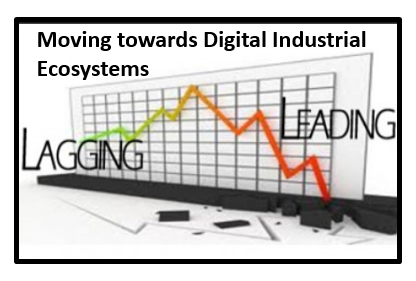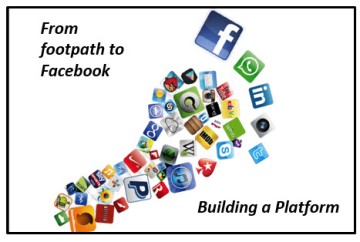
It does seem every time you read about GE it seems to be under a relentless barrage of negative news coverage.Then the stock is continuing to get a hammering perpetually.
Mistakes will be also made going forward, as the current management tries to “right the ship” after so much mismanagement. Digital course correction might be one of these mistakes.
For me watching the current GE story unveil itself it, just fills me with a real sense of sadness. Clearly, it now seems GE lost its ability to listen, reflect and adapt, its management was cutting many governance corners, pushing for performance that was not as much in the ‘tank’ as they thought and placing bets on the future, that was very bearish and as it is now revealed, possibly reckless.
GE as a group business was being pushed on, regardless, it sort of ploughed on as a supertanker does, unable to make the course corrections it was required to do, as its steering was jammed in ‘full speed and forward drive’, regardless, ignoring dangers, possibly sealed in its own bubble, one of believing it was invincible.
Yet one of the boldest moves made in the reign of Jeff Immelt that might have been a substantial transformation was the shift to digital that he underpinned, although there have been comments I have seen by outsiders of “the endless checkbook.” All I can say is that you have to invest in opportunities like this, they are so transforming. The ability to spot the industrial internet was one of his positive signature moves, taken I believe nearly a decade ago – a lifetime in the digital world. So lets update where we are.

 Why do we need a new innovative architecture, for mapping out the future
Why do we need a new innovative architecture, for mapping out the future I was not aware until recently that there are well over 450 providers of Platforms, all offering solutions, presently giving a very fragmenting market. Collaborators be aware!
I was not aware until recently that there are well over 450 providers of Platforms, all offering solutions, presently giving a very fragmenting market. Collaborators be aware! The platform has become essential for much of our social and direct engagements. The likes of Facebook, Amazon, Airbnb and many others are transforming much of our digital engagement for our social and private needs.
The platform has become essential for much of our social and direct engagements. The likes of Facebook, Amazon, Airbnb and many others are transforming much of our digital engagement for our social and private needs. Business is far from usual, it is transforming in front of our eyes. A business has to simply accept this is a changing world and business ecosystems are coming of age, perhaps adding more complexity but also to help bridge this transformation. The traditional silo mentality, the belief that your industry boundaries are immune to change and new challenges, is a grave mistake.
Business is far from usual, it is transforming in front of our eyes. A business has to simply accept this is a changing world and business ecosystems are coming of age, perhaps adding more complexity but also to help bridge this transformation. The traditional silo mentality, the belief that your industry boundaries are immune to change and new challenges, is a grave mistake. I’ve been interested in what constitutes a “platform” and how platforms spawn and nurture ecosystems for quite some time. We’ve been exploring these ideas in this blog over the last few months.
I’ve been interested in what constitutes a “platform” and how platforms spawn and nurture ecosystems for quite some time. We’ve been exploring these ideas in this blog over the last few months. I have put some focus back on the platforms recently, as this is becoming a real imperative to understand the whole meaning and implications of platforms, with the necessary management they require, so as to enable us to rethink different business models for the future.
I have put some focus back on the platforms recently, as this is becoming a real imperative to understand the whole meaning and implications of platforms, with the necessary management they require, so as to enable us to rethink different business models for the future.
 It had to come to this eventually. The emergence of Blockchain and distributed ledger systems illustrates how innovation is moving from focus on products and services, which are interesting but don’t provide a long-lasting competitive advantage, to a focus on platforms and ecosystems.
It had to come to this eventually. The emergence of Blockchain and distributed ledger systems illustrates how innovation is moving from focus on products and services, which are interesting but don’t provide a long-lasting competitive advantage, to a focus on platforms and ecosystems.